A few years ago I travelled to the South East of England to explore pastures new. My original idea was to take my Canon 33V with various lenses but knowing that my hands tend to freeze up in the cold, I chose to take the Canon f/1.8 50mm STM lens. Without an aperture ring or hyperfocal distance markings, I decided to use the camera on programme mode and – shock horror – spend the week using it as a giant ‘point and shoot’, letting the camera make all of the technical decisions, while I just composed the images and shot the scenes.
I was over the moon with the lens because it was quiet in use, small, light, had a fast maximum aperture (if the camera decided to use it!) and razor-sharp optics, full of contrast and flare-resistance.
I hadn’t used the 50mm focal length for many years, favouring wide angle lenses. On my trip to the South East, it was refreshing and challenging to use a lens that so closely mimicked the human eye, with no distorting or compressing properties.
The first image shows a lone woman walking along the shingle beach at Aldeburgh in Suffolk. My eye was drawn to the scene because I liked how the lines on the road, the wall, the shingle beach, the sea and the horizon were split into layers of contrasting textures. The resulting image of the woman walking away from the one patch of sunlight is a melancholic image of the coast in the winter months.
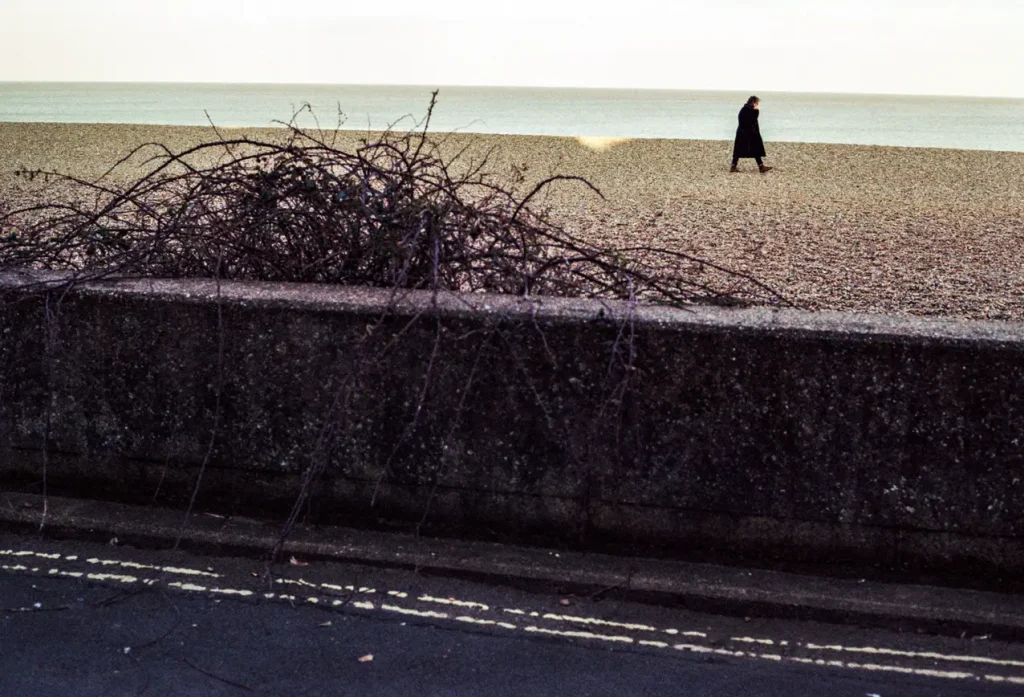
This shot of colourful beach huts on Southwold Beach in Suffolk is a gentle nod to the work of American photographer, Garry Winogrand, who was well known for his sloping horizons and one element in the shot which was vertical; in my case, the dog’s legs. Even though it is a very busy scene, I like the separation of the figures in the distance which give my image an abstract and disjointed feel.
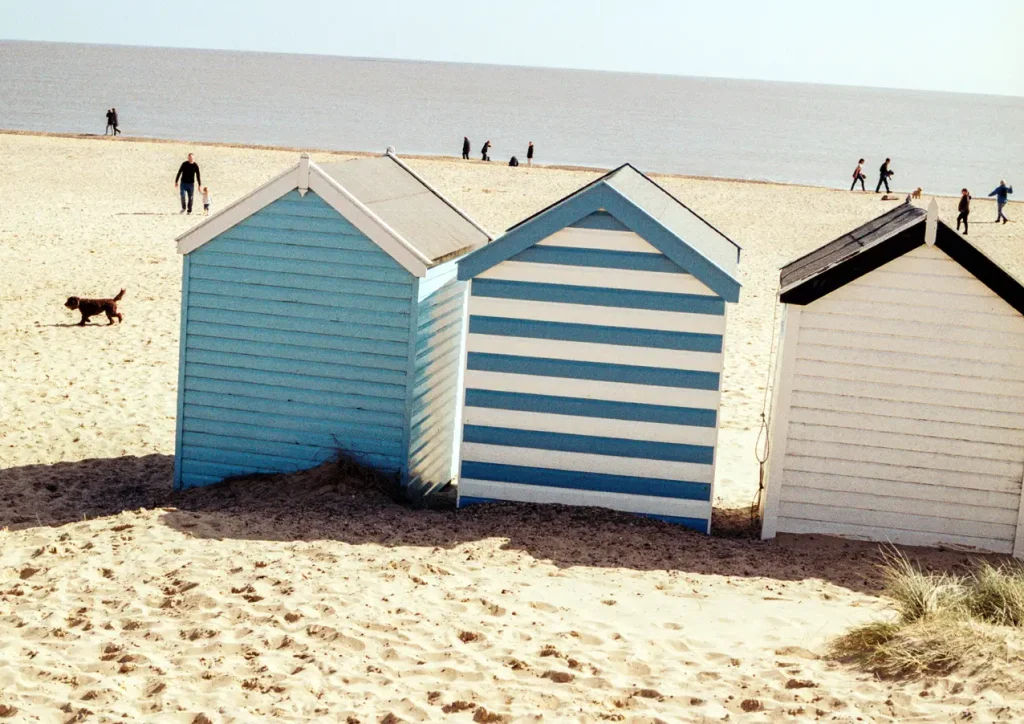
This photograph, taken in the historic and ancient fishing port of Leigh-on-Sea in Essex, appears to tell a story – feel free to make up your own narrative! I like the juxtaposition of the old and the new. An elderly man looks out to sea as a young couple fool around on a jetty. He stands unmoving by the mirror-like pool as the teenagers play next to the turbulent waters. It’s a scene that must have been repeated many thousands of times over the centuries.
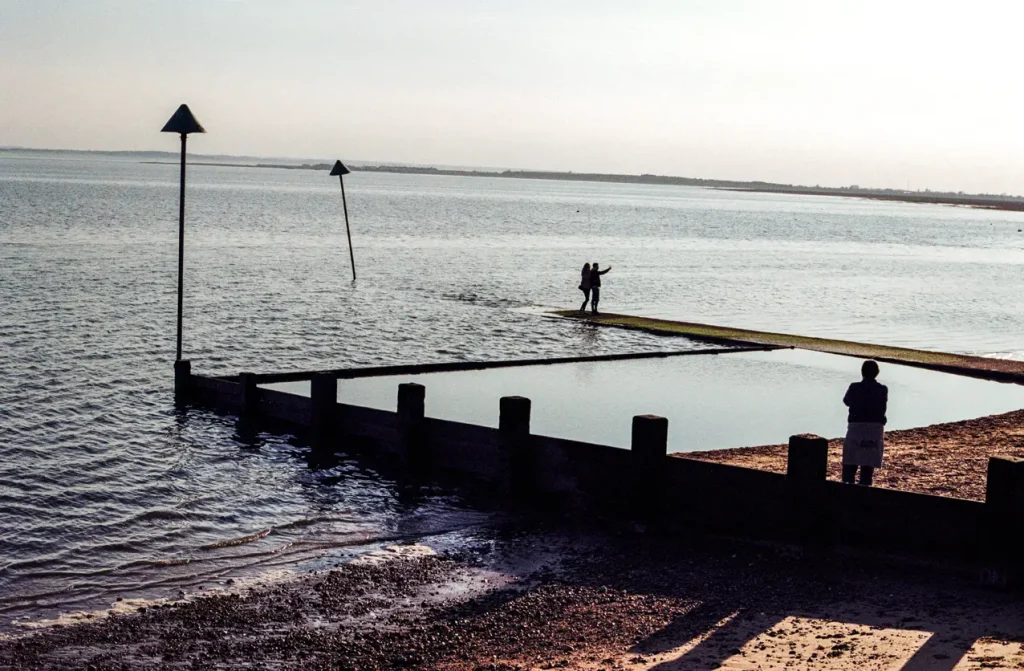
On a visit to the Royal Horticultural Society’s gardens at Hyde Hall in Essex, I came across a field of scarecrows. While other visitors took snaps of the horticultural exhibits, I chose to focus on the crudely-made and grotesque scarecrows, opting for a quirky perspective in which they dwarfed the horse sculpture and people on the horizon.
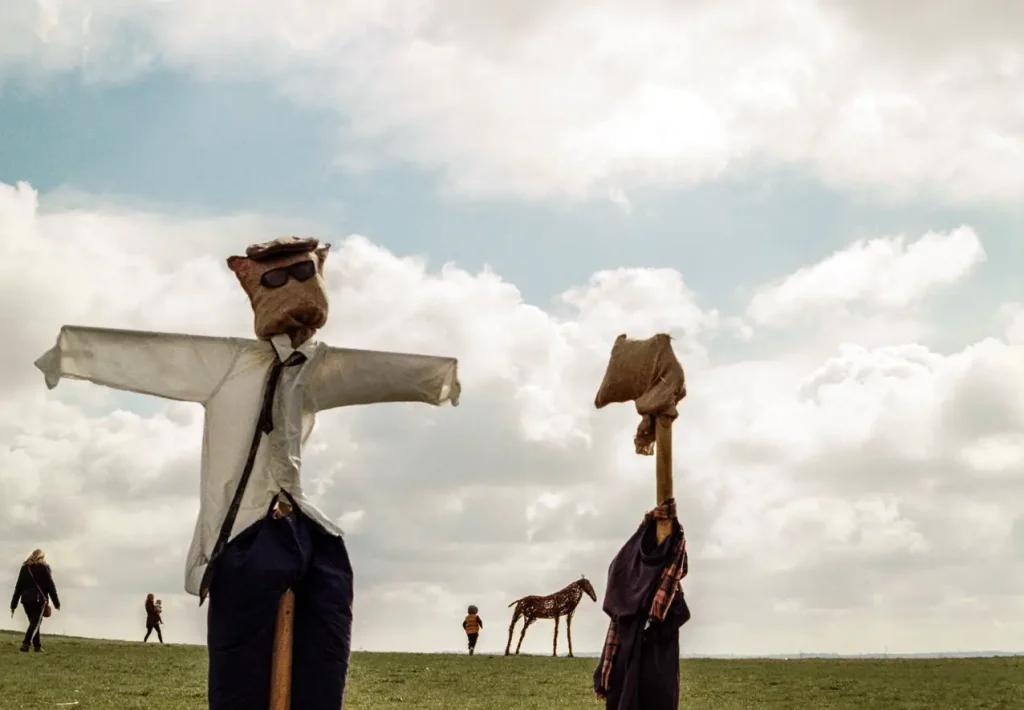
Using the 50mm lens for this type of image on Felixstowe beach was unsettling as the figures seemed so close through the viewfinder. I liked the fact that the elderly man, the lone figure and the boat were all heading in the same direction. I also liked how the elderly man was coming into the frame, while the lone figure was framed by the stone wall. The final image has a feeling of movement – of time marching on.
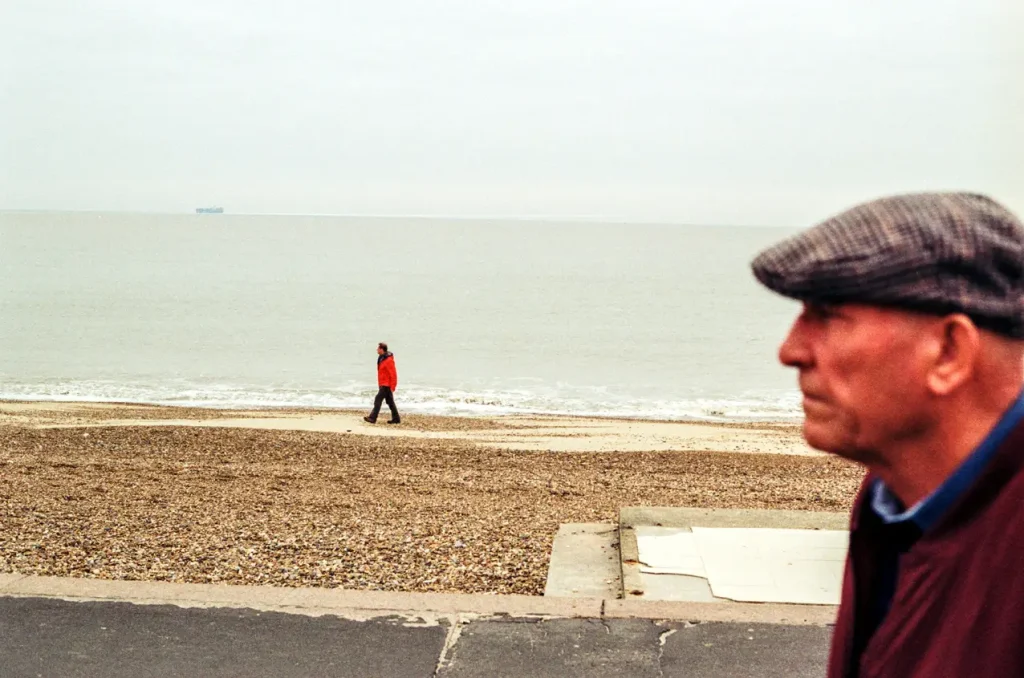
For all of these photographs I found the 50mm lens and letting the camera do most of the technical side for a change, extremely liberating. The focus speed of the lens and high quality optics enabled me to capture the intimacy and dynamics of each scene. This lens has now become like an old friend to me. I would highly recommend giving the 50mm focal length a try.
Share this post:
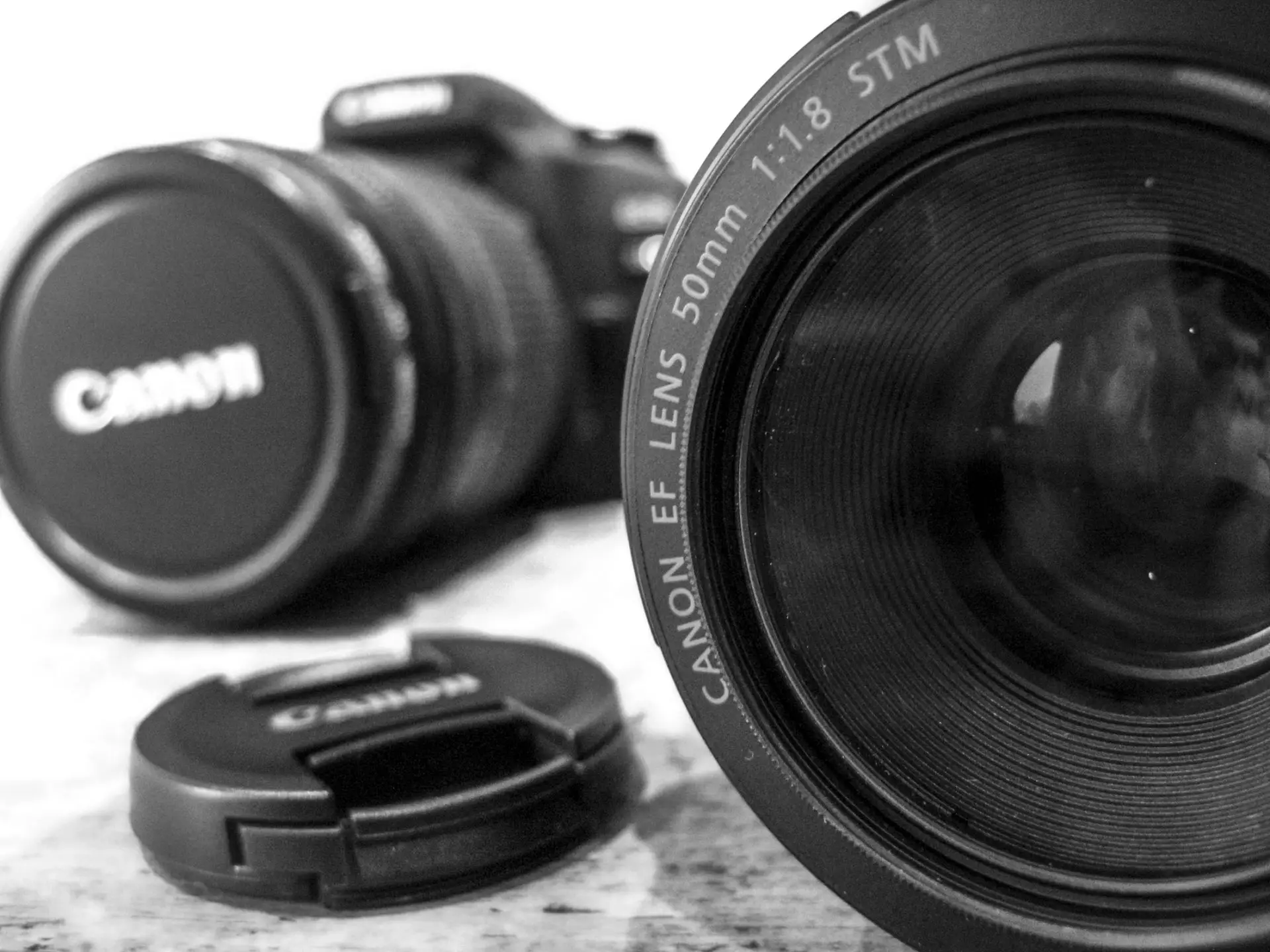








Comments
Phillip Edwards on Roaming in South East England with a 50mm lens – by Mark Harrison
Comment posted: 07/03/2021
Comment posted: 07/03/2021
Bob Janes on Roaming in South East England with a 50mm lens – by Mark Harrison
Comment posted: 07/03/2021
Comment posted: 07/03/2021
Kurt Ingham on Roaming in South East England with a 50mm lens – by Mark Harrison
Comment posted: 07/03/2021
Comment posted: 07/03/2021